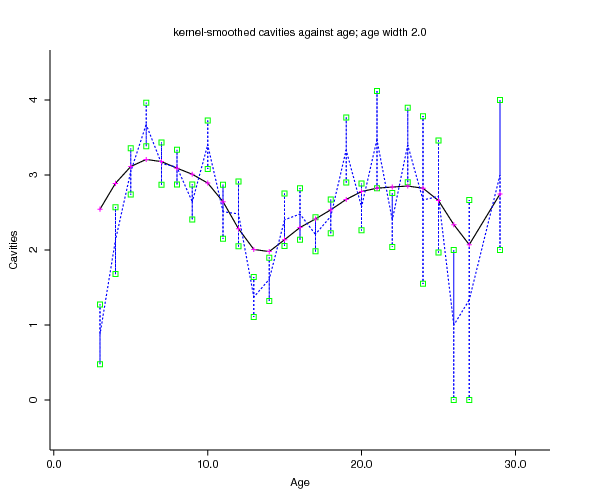- A wrenching story of typhoid by Paul Farmer, the Father Theresa of Haiti
- Testing for typhoid: a story closer to Ranquitte
- The Malaria Story, from National Geographic
- Standing water was our enemy. Our solution: better drainage. But better drainage in conjunction with agriculture on campus.
- Where does the water come from?
- How can we better control the water?
- Topo maps
- "exponential growth" was a phrase used in the National Geographic
article.
- What is exponential growth?
- Is the growth of malaria parasites really exponential?
- Not for long: "Human malaria parasites, in the asexual erythrocytic stage of infection, demonstrate an exponential growth phase that terminates shortly after the onset of periodic fever...." (Periodic and Chaotic Host-Parasite Interactios in Human Malaria, Dominic Kwiatkowski, Martin Nowak, Proceedings of the National Academy of Sciences of the United States of America, Vol. 88, No. 12 (Jun. 15, 1991), pp. 5111-5113)
- A refined model (system of difference equations)
- Links:
- National Geographic feature on malaria
- Life-cycle of Plasmodium (including a nice animation of the cycle)
- Here's another Plasmodium life cycle site: "The destruction of the red blood cells and the release of the parasites' waste products produce the episodic chills and fever that characterize the disease."
- From the CDC, including this remark: "P. malariae, found worldwide, is the only human malaria parasite species that has a quartan cycle (three-day cycle). (The three other species have a tertian, two-day cycle). Plasmodium malariae causes a long-lasting, chronic infection that in some cases can last a lifetime. In some patients P. malariae can cause serious complications such as the nephrotic syndrome."
Good news! It turns out that you can breath the air! Ranquitte's air is very pure, from all I could tell. As an asthmatic I neven once had to use an inhaler, and never had an episode. Marvellous. The advantages of few motor vehicles and no power plants.....
- The story
- Some approaches to a solution:
- The Story
- Data: Ranquitte's Calhoun-Spady school cavity data

This graph illustrates the "adolescent dip" in cavity numbers, which we presume is due to the loss of baby teeth, and the beginnings of the adult teeth. The blue curve connects the means (plus or minus one standard deviation). The black curve winding through the data is a smoothed estimate of mean numbers of cavities by age, with a 2-year smoothing window. At the far end we have few data points, which leads to the apparent contradictory information on that tail. - This lisp file is used to produce the plot above.
- Other observers, even in the first world (France), have noticed
that our kids teeth are too often terrible:
Vraiment trop
gâtées, les dents de nos jeunes! The author bemoans the fact that nearly
half of their 12-year olds have cavities. In Ranquitte, 67% have cavities! The
European Union's objective is that 90% of the children 12 and older have no
cavities
Results for Ranquitte: 80.78% of students with cavities (n=1020) 73.58% students 12 or older with cavities (n=579) 66.67% students 12 year olds with cavities (n=54)
- Population growth rates:
- Haiti's population growth rate is 2.453% (2007 est., CIA World Factbook, Haiti)
- U.S. population growth rate: 0.894% (2007 est., CIA World Factbook, US)
- The case for overpopulation as a public health problem
- Compare your group's Moms to those in Ranquitte, Haiti, using data on women and their children, living and dead (from the health clinic in Ranquitte)
- Family Planning
- Links:
- Too Many People, by Lindsey Grant
They don't add: they're sort of "multiplicative":
"Schmalhausen's Law states that organisms near the boundary of their tolerance, in extreme or unusual environments along any one dimension of their life requirements are highly sensitive to perturbations of all their life requirements. This creates a generalized vulnerability that links otherwise unrelated diseases and makes the study of vulnerability central to the health of populations. Increased vulnerability is seen in greater variability of outcomes in response to even trivial differences of circumstance, making the variability an object of interest in its own right and not just a tool for estimating mean values. Resilience and resistance to stressors erode during a lifetime of coping, more rapidly in populations that are closer to their boundaries. Geographic variability of outcomes depend on the variability of exposure and the resources for resistance and response. " (Richard Levins)
